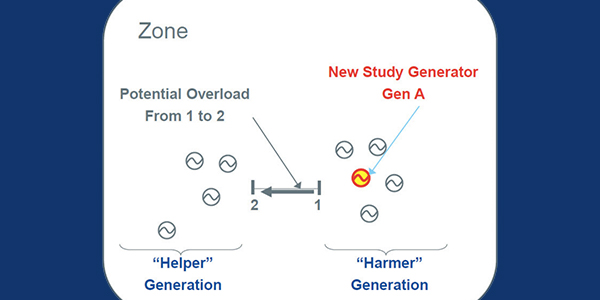FERC on Thursday ordered ISO-NE to remove its new-entrant rules for its Forward Capacity Market from its Tariff, preventing resources from being allowed to lock in their prices for seven years (EL20-54).
The commission said the rules resulted in “unreasonable price distortion” and that locked-in prices are “no longer required to attract new entry, with the benefits provided by price certainty no longer outweighing their price-suppressive effects.” FERC said that price-lock agreements in effect before the order will not be impacted, with the new rules starting with FCA 16, scheduled for February 2022.
The rules had been in effect since ISO-NE began its capacity market in 2006. They allowed capacity resources to sell at the same price for five years — extended to seven years in 2014 — with resources offering in Forward Capacity Auctions at $0 after the first year to ensure that they cleared. Although this prevented them from taking advantage of higher prices, it was seen as a shield against lower prices.
ISO-NE implemented several other changes to the FCM when the price-lock period was extended, including a systemwide downward sloping demand curve to address capacity price volatility. It also implemented market scarcity pricing enhancements that increased reserve constraint penalty factors for 10- and 30-minute reserves, and bumped up the price that resources are paid for energy and reserves in real-time during scarcity conditions.
“Together, these changes to the capacity, energy and ancillary services markets have significantly altered the landscape for new entrants in ISO-NE,” the commission wrote. “The energy and ancillary services market improvements provide resources to receive a more significant proportion of revenues in these markets, which reduces the revenue that resources need to earn from the FCM to recover their costs.”
The order ends a six-year-long proceeding. When FERC approved the price-lock extension, it allowed ISO-NE to forego an offer floor for resources, despite previously rejecting a request by PJM to remove the offer floor for its own price-lock period. This prompted a challenge by Exelon and the New England Power Generators Association (NEPGA) and the D.C. Circuit Court of Appeals remanding FERC’s approval, though the court did not vacate the rules.
FERC subsequently instituted a paper hearing in July to re-examine the rules. (See FERC Opens Proceeding on ISO-NE New-entrant Rules.)
The commission said that new resources’ entry should be driven “at least in part” by future price expectations, and that the price lock interferes with that dynamic. With the elimination of price risk, a new resource may lower its offer price to increase the likelihood of being selected in the auction. FERC said that if this resource is the marginal resource, the lower clearing price “distorts the price signal sent by the FCM and reduces the price paid to all capacity suppliers in that auction.” The commission added that it previously recognized that new-entrant rules could result in price suppression, but ultimately found that it was “an acceptable byproduct of market rules that would attract new entry through greater investor assurance and protect consumers from very high year-one prices.”
ISO-NE spokesperson Matt Kakley said the RTO appreciated “the clarity” of FERC’s decision and is “prepared to eliminate the price lock for new resources.”
“We are gratified that the commission recognized the many improvements we have implemented in the New England wholesale markets,” Kakley said.
NEPGA President Dan Dolan said the organization is “very happy to see that FERC agreed that the seven-year capacity price lock is no longer necessary to bring in new investment and resources into New England. … This order is a strong statement that New England’s Forward Capacity Market has matured to be an investible market that, when properly structured, can support reliability and new investment.”
But FERC disagreed with NEPGA’s argument that unreasonable price suppression would continue even after the price lock is removed unless ISO-NE implements a soft offer floor. The commission said that though NEPGA demonstrated “that FCA pricing outcomes can theoretically differ depending on whether a soft offer floor or a zero-price offer requirement is in place, recently cleared resources are unlikely to have high going-forward costs.”
The commission agreed with ISO-NE and Potomac Economics, the RTO’s External Market Monitor, that the adoption of an offer floor “would unnecessarily complicate the FCM and have detrimental consequences.”
Dolan said NEPGA stands by its concerns about “the ongoing price suppression effect that price-taking units have on the auction results” but added that “fortunately, the end is now in sight.”



